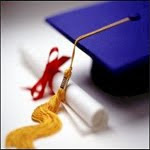By : Lucy Bartlett
Online courses help students to further their learning abilities and education. No matter where a student is located, the resources are available at their fingertips when one studies online courses. There are innumerable online courses and training methods available.
A course on personal development, to continue with a hobby, training for a new career or enhancing business skills are just some of the possibilities available in online courses. Their area of interest can be explored at the students own pace. There are thousands of online courses covering hundreds of topics.
Online Courses in Business among others include a course to start your own business or training in time management. Other available online courses include leadership skills, techniques on conducting interviews and marketing courses – online or offline.
Online courses in training includes programming languages, marketing through internet, personal computer hardware, Linux, training in office software, graphic designs, web design and other certificate courses in information technology.
Online courses for training in a specific career are also possible. The available resources includes various vocational training programs in wedding planning, carpentry, bookkeeping, real estate, automotive courses, medical transcription and lot of other options to get a diploma. Find more info at http://www.online-courses4u.info
Professionals who would like to continue their education have various options available in online courses. Engineers, architects, lawyers, physicians, real-estate professionals, social workers, teachers and massage therapists and others, can pursue online CEU and CE courses.
Online courses in personal development are meant for developing a hobby or pursuing a personal interest. Home improvement, investing, gardening, cooking, art and design, digital photography and traffic school and many others are included.
Languages can be learned through various online courses available on the internet. Expanding the existing language skill or learning a foreign language is made easy. Supplementary help for courses such ESL, TEFL are also included in various online courses. Languages such as Japanese, Spanish, Italian, French or German can be easily learnt through online resources.
Convenience and flexibility are the advantages in online learning. This is more so if the students have other commitments. Depending upon on the needs of the student a greater adaptability is also possible along with enhanced communication between the student and the teaching resources online. Some of the advantages of online courses include the teaching materials presented in non-verbal mode and the varieties of learning experience, using multimedia.
E-assessment or assessments made with the aid of a computer includes multiple choice tests which are automatically generated, gearing towards the specific mistakes made by the students and to navigate through a series of questions to find out what the student has learned or not learned.
5 Best Tips For Selling Anything on Ebay
16 years ago
